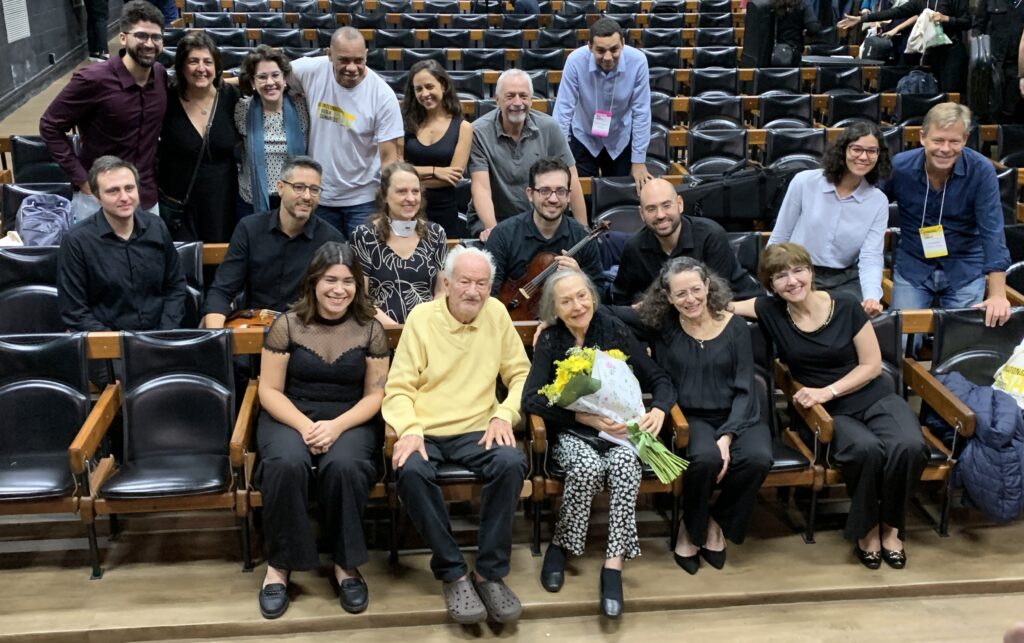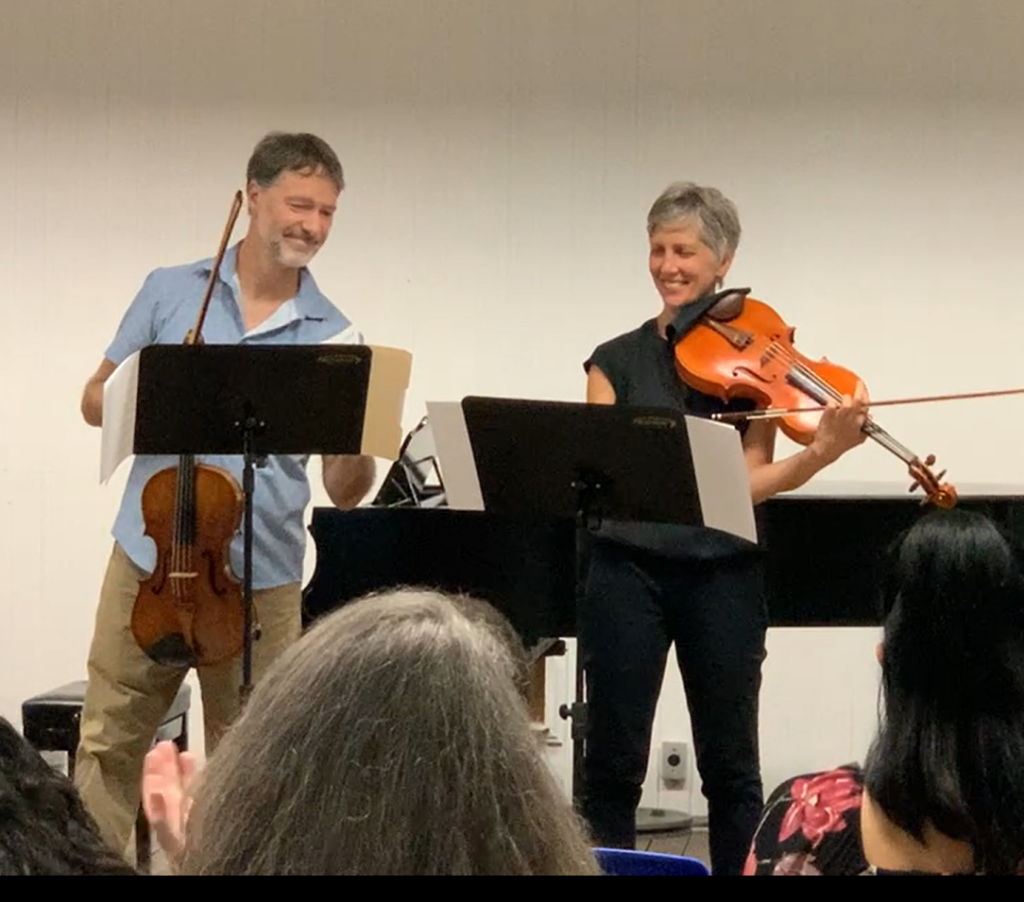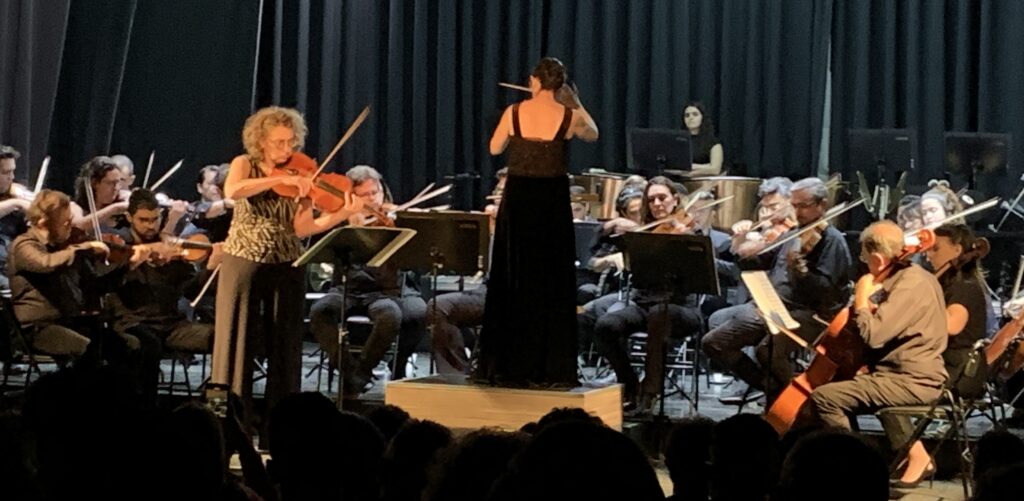door Roald van Os, HVVS
Rhenen, Oktober 2025
Met het Orkest als Laboratorium van en onder leiding van ‘hoofdlaborant’ Johannes Leertouwer kregen studenten van de historische en klassieke afdelingen uit Den Haag, Amsterdam en Utrecht en jonge professionals weer een unieke kans zich verder te ontwikkelen in de historische uitvoeringspraktijk van romantisch repertoire. Dit keer stond de 3e symfonie (Rheinische) van Schumann en zijn pianoforteconcert met als solist niemand minder dan Olga Pashchenko in de proefopstelling om nader onderzocht en uitgevoerd te worden. Ook de Historical Violin&Viola Society (HVVS) was getuige van deze bijzondere week en doet er graag verslag van.
Ons orkest dat uitsluitend op historische instrumenten speelde, hield zich een week lang op in de Bernhard Haitinkzaal van het Conservatorium van Amsterdam waar heel gedisciplineerd en hard gewerkt werd. Johannes had dit keer zelfs de beschikking over jong professionele assistenten die met de partituur erbij vanuit de zaal en soms op het podium feedback en ideeën gaven en als sparring partner van grote waarde bleken bij het schaven aan de wijze waarop bijvoorbeeld mooi het verschil in dynamiek en effect tussen sforzandi en fortepiano’s door het orkest gemaakt konden worden. The devil is in the details blijkt dan toch maar weer, de partituur staat nl. vol met aanduidingen en die verschillen nogal eens van elkaar. We hebben geleerd dat het grootste effect en expressie pas bereikt wordt wanneer je heel bewust die verschillen zo precies mogelijk maakt en dat je op voorhand al weet wát je er mee doet en probeert niet in oude aangeleerde gewoontes te vervallen of alles in een soort quazi Fortepiano-default-stand behandelt. Dat laatste is gewoon best lastig omdat je het eerder aangeleerde moet afleren voordat je iets nieuws kunt leren en dat goed kan laten inslijten. En dat voor sommigen ook nog eens op een totaal nieuw instrument zonder kin- en/of schoudersteun, met andere stok en darmsnaren. Zelf merkte ik ook hier weer dat bijv. de linkerhand bij strijkers standaard ‘uit’ staat en een expressief hulpmiddel wordt daar waar de muziek erom vraagt c.q. waar het genoteerd staat. Bijvoorbeeld zodra er een crescendo staat. ‘Dynamisch gebruik van …’ is wel het sleutelbegrip in het bewust uitvoeren van deze muziek. Het zit in de zich soms snel opvolgende tempowisselingen, klankkleuring, dynamiek, agogische accenten en articulatie een benadering vraagt die dicht bij de zangkunst ligt.
Dan kort over de opstelling van de altviolen, die zaten vanuit het publiek gezien links direct naast de eerste violen en pal voor de hoorns waarmee ook vaak een soort klankblok gevormd werd. Ik heb hier zelf ervaren dat het mengen van de groep met een mix van natuur- en romantische ventielhoorns met de altviolen met darmsnaren de nodige warme kleuren opleverde. We sloten de week af met een fantastisch concert in de Stadsgehoorzaal van Leiden waar Olga op een mid-19e -eeuwse Duitse vleugel ons orkest vleugels gaf waarmee we als het ware over en door het concert en vervolgens de Rheinische symfonie vlogen.
Leuk om hierbij alvast te vermelden dat het met Leertouwer niet bij zijn geliefde Brahms, Mendelssohn en Schumann blijft. Vanaf volgend jaar waarin de 4e van Schumann en zijn celloconcert op het programma staat, start hij namelijk in Utrecht met de Beethoven Academie en wil hiermee alle 9(!) symfonieën van de grootmeester uit Bonn in 2026 en 2027 gaan uitvoeren. Ook hierin staat het onderzoeks- en leerelement centraal. Meer info vind je hier.
De HVVS houdt het allemaal voor jullie in de gaten en geeft waar nodig haar hulp aan dit prachtige initiatief!













































